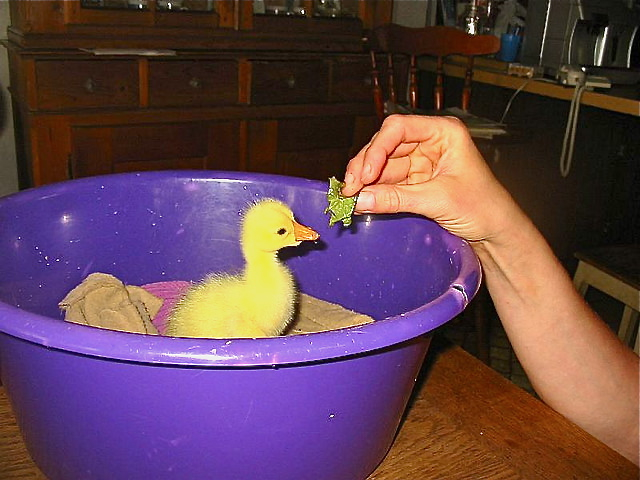Exoticism is often a tragicomedy in American fine dining. Especially when class takes precedence. Feted chefs convinced wealthy diners to prize foods once cursed as shameful to consume in public. Lobsters were largely deemed as pests that tangled up fishing nets along the America’s coasts until railroad transportation imported their tails to Midwestern restaurants, which then served them as exotic, overpriced specimens.
Numerous American gourmet gourmands, notably Mario Batali, herald polenta as a versatile ingredient despite the grits-like cornmeal’s sad history as one of the few affordable foods that Italian peasants consumed for centuries, who were often chastised as “polenta eaters” by their middle-class and wealthy countrymen. And then there’s sushi, a staple of the Japanese working-class, later a bragging right for American yuppies in the 1980s.
The intersection of class and cuisine was made newsworthy again when California restaurants recently served “last hurrah for foie gras” specials, before a statewide prohibition came into effect on July 1. The now ‘forbidden fruit’ is tellingly described as a ‘Forbidden Waterfowl Liver’ that’s been fattened by forcing mashed grains down a goose’s throat via a metal tube. Governor Arnold Schwarzenegger signed the ban in 2004, with the promise of funding research and collaborations with foie gras producers into seeking humane farming practices. That early intention never materialized.
California Democratic Party Chairman and the ban’s author, John Burton, stressed in his Los Angeles Times op-ed that only a tiny minority enjoys the product, stating that one percent of the state’s restaurants serve foie gras. “Most people would find it hard to stomach eating any part of a diseased animal, but in the case of foie gras, it’s the diseased organ itself on which consumers dine,” he wrote early in the piece. Burton also noted the large number of restaurants that already agreed to not serve foie gras and he emphasized that no animal would enjoy being forced-fed.
The ongoing ethical debate about whether or not “humane” foie gras is an oxymoron was largely pushed aside since there were anxious or curious customers to serve during legal foie gras’ final week. I suspect that many knew about the controversial farming practices, but did not let that spoil their appetites. Prices in my home region of Sacramento generally aimed at affluent foodies who were charged in the 20$ plus range – no surprise for a dish considered a decadent delicacy of the wealthy.

I saw a curious reversal of this custom during lunchtime when I visited the Pangaea Two Brews Café on June 30, the last day that foie gras’s sales and production was legal in California. Guest chef Michael Thiemann of Ella’s Dining Room instead served his foie gras dishes under $10, a price that’s half of what was charged at white tablecloth establishments.
The livers were formed in slices, or mashed up with other ingredients. I had a more visceral reaction to the televised spectacle I watched that morning: sweaty contestants hacking up raw duck hearts into appetizers with mushrooms and chocolate-covered cherries (really) on the Food Network show, Chopped.
“I wanted to make it an Everyman thing,” Thiemann told me during a break from garnishing fresh lavender upon slices of foie gras in his biscuit sliders. “I personally can’t afford a $100 dinner ticket. Hopefully people will have the opportunity to try it for the first time. It’s funny, besides the foie gras (name), it’s liver. How many people like liver?”
The livers came from the Hudson Valley farm in New York, which many pro-foie gras advocates and chefs like Thiemann consider to be a prime example of humane farming. Thiemann said he was selling his foie gras dishes at a financial loss rather than profit from the ban that was 12 hours away. “It’s just about sharing it, being a part of it, and then it’s gone.”

Two dozen or so people clad in T-shirts and shorts, a wide range of ages and ethnicities, crowded in the café around lunchtime, while dub reggae played in the background. Many curiously nibbled on smears of foie gras between sips of Belgian ale or American microbrews, conducting their conversations as if dining on the café’s usual panini-style sandwiches. A group of local bikers took a seat next to me and lunched upon beef marrow stew laced with foie gras or croissants smeared with the pieces of the liver.
Chef Thiemann looked little different from his days as a drummer for the 90s trash-punk band The Yah-Mos (featuring future members of so-called “dance punk” icons !!! and Out Hud.) He underwent a path in life that took him from Midtown Sacramento’s T Street House punk hangout to cooking in gourmet restaurants around the world, to recently settling at a Sacramento restaurant where state politicians and lobbyists wine and dine.
“To me, it sounds super first-world,” he said about the commotion over foie gras. Thiemann told me that he wishes to see an amendment rather than a repeal of the ban that would allow higher standards in farming practices. He noted the past few years saw a culinary movement that calls for “free-range” or un-caged chickens. Ryan Donahue, a co-organizer of a few “last hurrah” events, told me the camaraderie and enthusiasm among the local chefs for cooking foie gras all drew in his involvement. “I didn’t think so much of the political aspect, which wasn’t really on my mind,” he said. “It was just getting people around the product that people are passionate about.”
Thiemann’s “Everyman” menu, designed to be affordable for non-wealthy diners will be a curious moment. California’s new foie gras ban has the makings of a feel-good/do-nothing regulation. Consumer affluence will remove the law’s teeth as a new black market for foie gras emerges to satisfy foodies willing to pay top dollar. Several law enforcement agencies such as the San Francisco and Los Angeles police departments recently expressed their disinterest in enforcing the law, especially during a time when violent crimes and budget cuts are rising. There’s also nothing to prevent restaurants at California’s Indian casinos from serving it.
The state’s 1,000$ fine per violation is painless for many haute cuisine establishments. Alexander’s Steakhouse in San Francisco sold last-chance foie gras feasts for 185$ a ticket, which is a price that can cover the state fine with the orders of just five customers. Ideas are floating among restaurateurs about using loopholes such as selling 20$ crackers with free foie gras. Such practices inspired the drive to end Chicago’s brief foie gras ban that then-Mayor Richard M. Daley famously dismissed as the “silliest law.”
The California ban’s only true casualty is the Sonoma Artisan Foie Gras farm that was the state’s sole commercial foie gras producer. Its proprietor, Guillermo Gonzalez told the San Francisco Chronicle, “I never thought I’d be in this whirlwind. We’re taking it with honor and dignity.”
A spectacle arose as the ban drew close. One pro-foie gras chef received death threats – celebrity chef and critic Anthony Bourdain responded by tweeting he would now eat foie gras out of “spite” for animal rights activists despite his boredom with the fattened liver. Bourdain, foie gras’ most outspoken and often obnoxious American defender, brought up class when dismissing the anti-foie gras campaign. He said it’s an easy target for animal rights activists since it’s a delicacy enjoyed by a wealthy few and most importantly, it’s French.
While Bourdain’s main concern about the foie gras carriers’ health is making sure their fattened livers’ flavors aren’t ruined by the waterfowl’s “stress,” he does have a valid point about the class aspect of foie gras consumption. It’s much easier to ban an esoteric dish consumed by so few Californians as opposed to taking on the state’s powerful beef, pork, seafood, and poultry industries. During the final week of legal foie gras, stories abounded about gourmet restaurants and shops across California making a killing from foie gras that week. Roland Passot of San Francisco’s La Folie told the Chronicle that he was celebrating “Christmas in June,” while Oakland’s The Pasta Shop reportedly sold $4,500 worth of foie gras.
While a lawsuit was recently filed against the state to dismantle the ban and the debate over “humane” treatment of waterfowl won’t cease (I’m still awaiting alarm over the Asian food specialty 99 Ranch Supermarket chain selling frozen duck feet and tongues by the pound,) my curiosity still veers to June 30, 2013. It’s the day before shark fin soup will be outlawed in California. That’s a ban that seeks to discourage the controversial fishing practice of slicing off a shark’s fin and then dumping the crippled creature back into the wild.
Like foie gras, shark fin soup is a dish that few Californians have consumed. Its fishing practices leaves little debate about cruelty to animals and unsustainable production, but it lacks the same socio-economic status as foie gras.
At first impression, it’s difficult for me to imagine “Shark Fin Soup Feeds” on June 30 at gourmet restaurants and hipster bars across California. And yet there was a notorious gaffe made by Alice Waters, a supposed champion of sustainable and organic cuisine, who said that her requested last meal would be shark fin soup. The legendary cuisinier later apologized under public pressure, claiming she didn’t realize how shark fin hunters were so wasteful and unsustainable. Exoticism may yet return to the dinner table.
Photographs courtesy of Franziskas Garten (#1,) Elaine Vigneault (#2,) and Sarah Twitchell (#3.) Published under a Creative Commons license.





